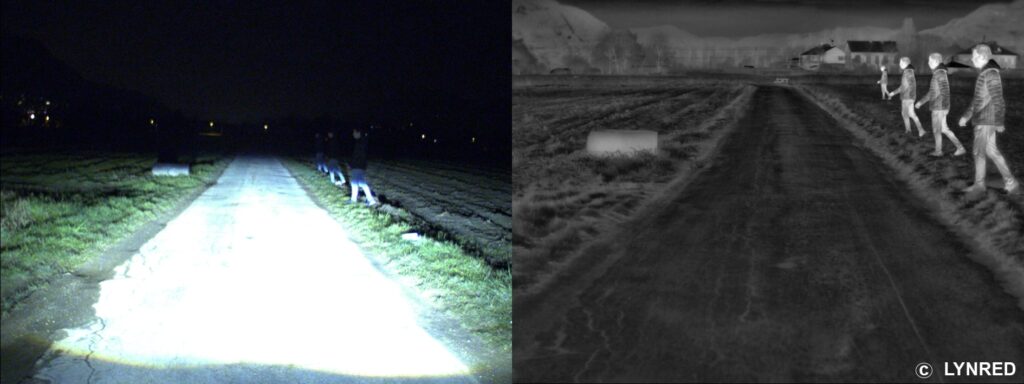Lynred and Saint-Gobain Sekurit announced a new AEB System Windshield incorporating visible and thermal cameras. The solution is meant to help OEMs improve collision mitigation system reliability, especially at night. Data from the U.S. Department of Transportation underpinned the decision by Lynred and Saint-Gobain Sekurit to design the windshield. The companies looked at NHTSA data showing pedestrian fatalities are more likely to occur at night than in daylight. In addition, Lynred and Saint-Gobain Sekurit said the visible and thermal camera windshield will reduce the number of false positives, whereby vehicles automatically brake despite no danger being present.
AEB System Windshield: Data-Driven Design
As described in a joint press release, Lynred and Saint-Gobain Sekurit co-developed the “AEB Windshield Solution” with visible and thermal cameras in response to new safety standards requiring Autonomous Emergency Braking (AEB) and Pedestrian Autonomous Emergency Braking (PAEB) systems as outlined by NHTSA’s notice for proposed rulemaking. The companies also cite Europe’s Road Safety Policy Framework 2021-2030 and its Vision Zero approach as key factors behind the development of the AEB System Windshield. Similarly, Lynred and Saint-Gobain Sekurit also point to AAA data showing that AEB systems with pedestrian detection could reduce annual vehicle/pedestrian accidents by up to 5,000.
“One of our main objectives is to provide Tier 1 suppliers with the critical building blocks to produce a thermal camera system under €100 that can connect to the AEB system,” said Sebastien Tinnes, global market leader at Lynred. “By halving the cost of thermal image sensors used by car makers today, they will have an affordable thermal sensor solution to enable them to comply to NHTSA rulemaking more readily across all car ranges.”

AEB System Windshield Specifications
Saint-Gobain Sekurit developed a crystal-based technology to create a transparent area within the windshield, aligning both the visible and thermal cameras. The crystal is Federal Motor Carrier Safety Administration (FMCSA) compliant and does not interrupt the performance of the windshield wipers, Saint-Gobain Sekurit said. Meanwhile, Lynred provided a VGA (640×480 resolution) thermal sensor equipped with Umicore lenses and configured the camera data input with the pedestrian detection algorithm. The companies note how thermal sensors have been traditionally placed behind the grille, exposing them to mud, rain, and other elements. Conversely, by positioning the visible and thermal cameras behind the windshield, Lynred and Saint-Gobain Sekurit said they can increase the reliability and accuracy of AEB in all scenarios.
“Our long-standing expertise in safety systems for windshields and our best-in-class glass material shaping knowledge are essential to ensuring the best optical performance for reliable camera detection both night and day,” explained Adil Jaafar, global innovation manager at Saint-Gobain Sekurit. “Alongside Lynred, we are pleased to contribute to the development of this innovation for the safety of all occupants while improving the mobility experience.”
AEB System Windshield In-Person
Lynred and Saint-Gobain Sekurit will demonstrate their AEB System Windshield during AutoSens Brussels 2023 at the Autoworld Museum, September 19th through the 21st, at booth 40. Following AutoSens, each company will prepare its respective technologies for industrial-scale production with the intent to have a final product on the commercial market, integrated into a windshield, by 2027.


